Want to be a Venice pavilion commissioner? Bring ideas – and your Rolodex
The impressive showings of the USA's Venice pavilion in the Giardini belie the ambitious fundraising efforts that underpin them. Past and present curators tell us how it works
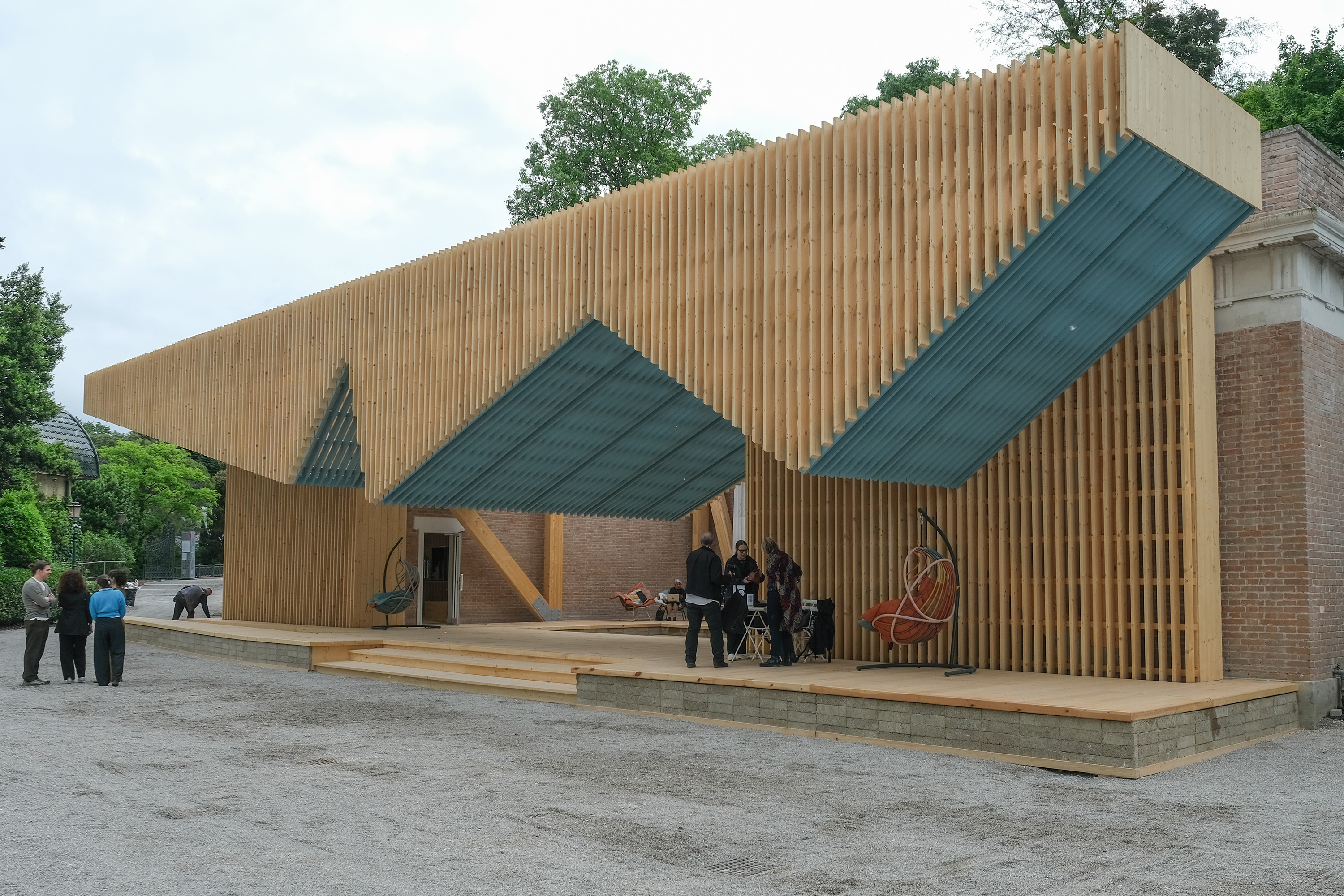
The sun shone brightly last week as an American curatorial team inaugurated the 2025 US Pavilion at the Venice Architecture Biennale 2025. A who’s who of American architects and design journalists mingled beneath a zig-zagging timber roof that was purpose-built for the pavilion, titled PORCH: An Architecture of Generosity. There were celebratory speeches, music and a dance performance. Even Diane von Furstenberg swung by.
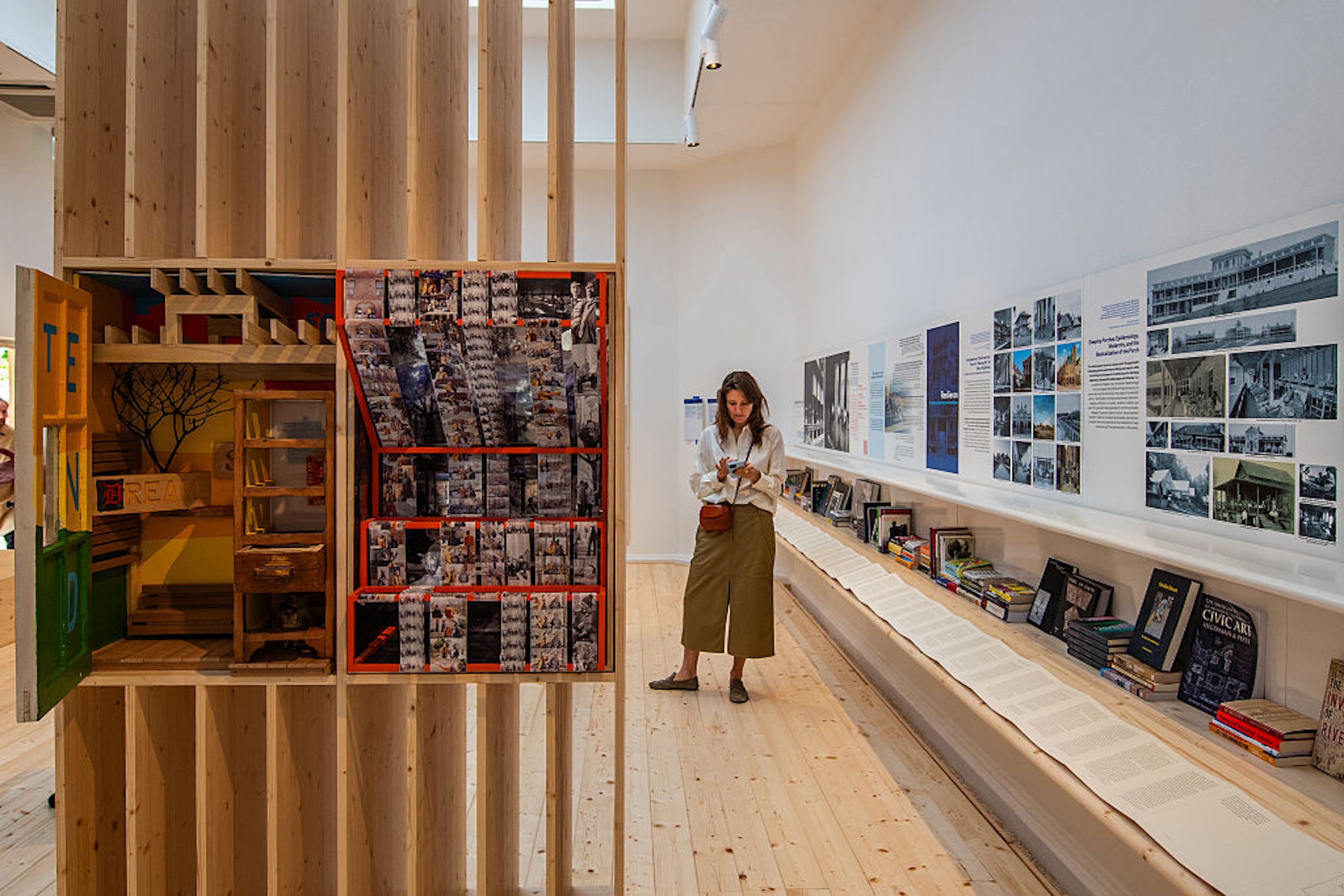
An interior view of this year's U.S. Pavilion, titled 'PORCH.'
Making a Venice pavilion happen
But the spritzes and the sunshine belie the financial and logistical feat it takes for architecture curators and co-commissioners to get to Venice in the first place. Organisers work on an extraordinarily compressed time frame, with less than eight months between the announcement of their appointment and the Biennale’s official opening. This year, proposals for displays were due by mid-January, leaving just 73 days for the organisers to select the top participants, get them built and ship them overseas.
The most pressing logistical challenge for US architecture pavilion commissioners, though, is fundraising. While the Architecture Biennale’s more glamorous sister event, the Biennale Arte, can rely on deep-pocketed patrons and galleries, pulling together funding for an architecture biennale is a more hardscrabble undertaking.
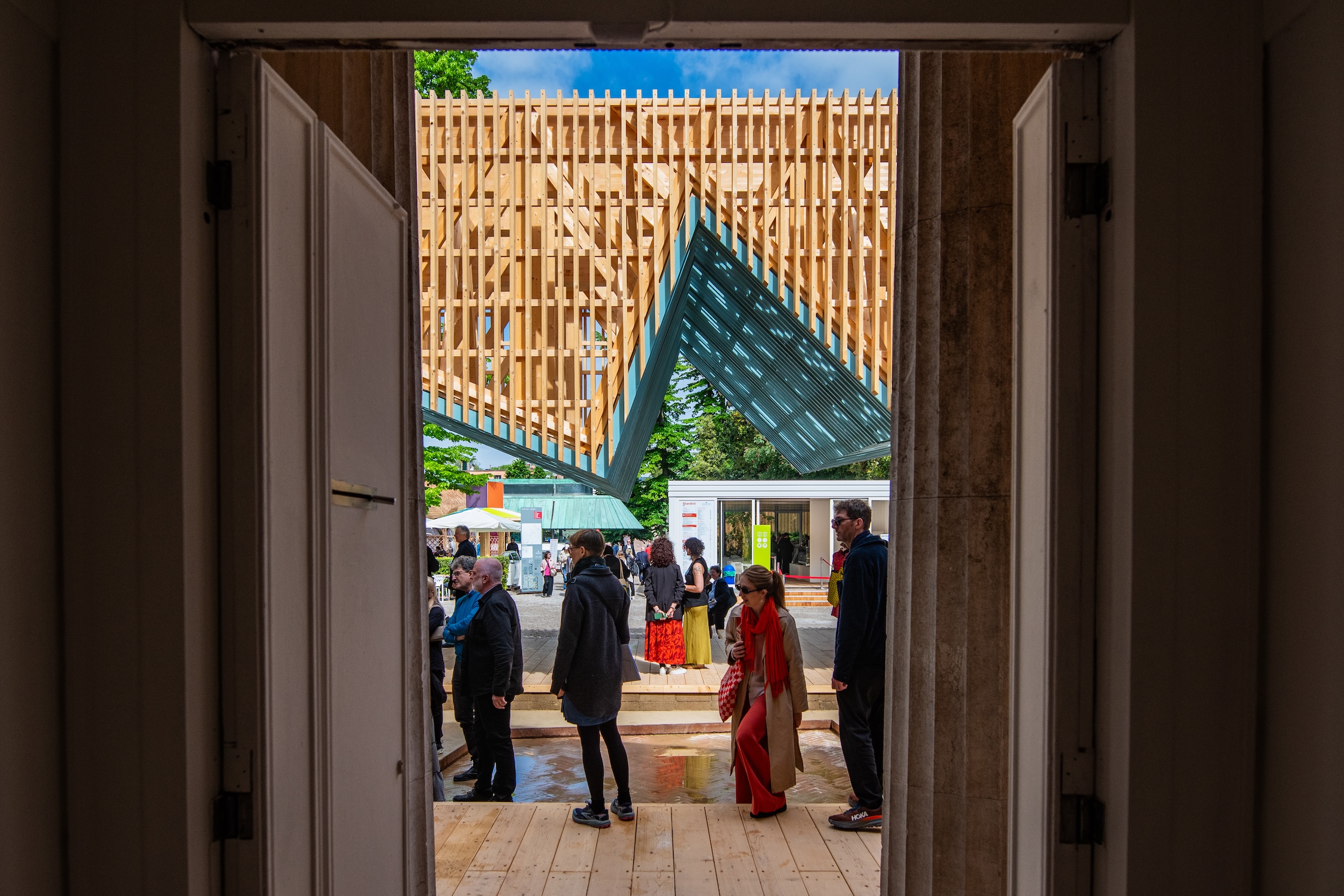
A view to the sweeping roof that envelopes the U.S. Pavilion as part of 'PORCH.'
Historically, US pavilions receive a small grant from the United States Department of State. Records show that $375,000 was allocated for the 2025 architecture pavilion. That money only goes so far; there is work to ship, structures to build and staff to accommodate – an enterprise whose costs can mount to as much as $2 million. And to make it all happen, the most ambitious pavilion curatorial teams have to know how to find the cash.
‘It is important to know how to fundraise,’ says Peter MacKeith, dean of the Fay Jones School of Architecture and Design at the University of Arkansas. ‘It's important to know that this is an entirely public, private enterprise from the get-go.’
MacKeith was one of three co-commissioners for this year’s US Pavilion, an Arkansas-based team representing the University of Arkansas’s architecture school, DesignConnects and the Crystal Bridges Museum of American Art, an institution founded by Alice Walton, the Wal-Mart heiress and philanthropist.
‘Part of the advantage we had going into this was [we had] three experienced organisations, each with their own depth and each with their own capacity,’ says MacKeith, who has been curating exhibitions in Venice since 1991. His team was advised to budget at least a $2 million for the project.
Receive our daily digest of inspiration, escapism and design stories from around the world direct to your inbox.
‘There is, as yet, no guidebook for this work,’ he adds.
‘There is, as yet, no guidebook for this work.'
Peter MacKeith, Co-Commissioner, 2025 U.S. Pavilion
Niall Atkinson, who was one of the co-curators for the 2018 US Pavilion, themed ‘Dimensions of Citizenship,’ concurs. That edition’s co-commissioners included the School of the Art Institute of Chicago and the University of Chicago. ‘We were two educational institutions coming together,’ he tells us. ‘I mean, those already come with fundraising machines.’
If you’re a small organisation, though, the story’s more complicated. In summer 2022, Tizziana Baldenebro got a call from the State Department letting her know that she would be the curator and co-commissioner for the 2023 US pavilion. ‘I got off the call, and I just remember crying, because our organisation had never fundraised that much money,’ she tells us.
At the time, Baldenebro was the director of SPACES, a Cleveland-based arts and culture organisation with an operating budget under $500,000 a year. ‘Our organisation was probably the smallest to do it,’ she says. ‘We weren't affiliated with a major institution– like, it was me knocking down everyone's door.’
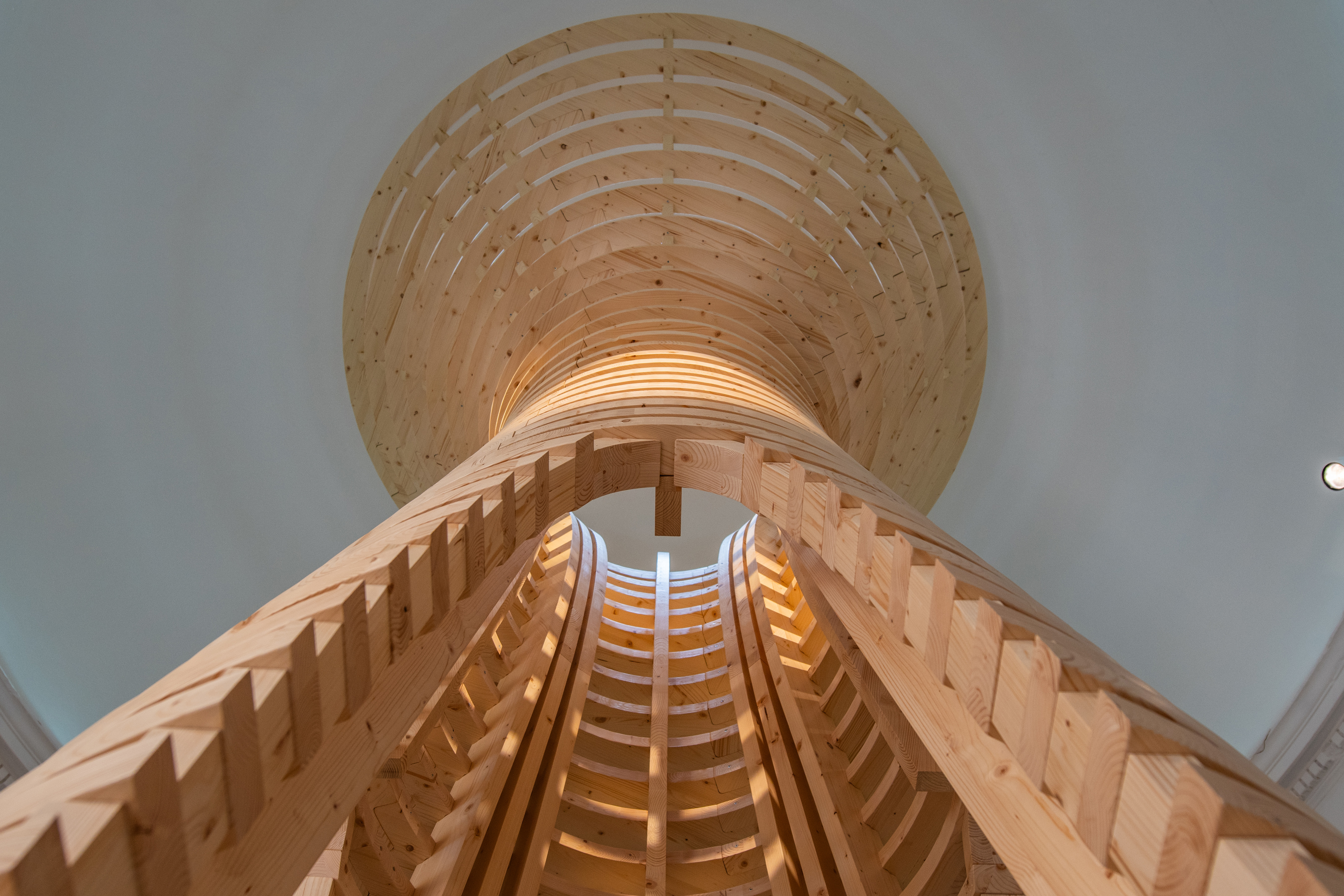
A central timber structure in 'PORCH's' rotunda.
What ensued was a flurry of fundraising to pull off her exhibition, ‘Everlasting Plastics.’
'Of the $375,000 [awarded by the State Department], $125,000 is like a pass-through grant for the Guggenheim Foundation [which owns the US pavilion]. They manage the pavilion, and they have a liaison. So effectively, you have $250,000 that's directly apportioned to your project, and that becomes seed money,' Baldenebro explains.
'It's also a hell of a lot more money than other countries get sometimes,' she adds.
In addition to the State Department award, Baldenebro found funding through the Ford Foundation as well as local nonprofit organisations, including the George Gund Foundation and the Cleveland Foundation.
‘One of the things that was very tricky for us was that SPACES was an arts organisation, and we were fundraising for architecture,' she says. 'Architecture doesn't have the same philanthropic backing that art does.’
In the end, the budget for ‘Everlasting Plastics’ wound up being around $1.3 million, according to Baldenebro. (By comparison, the 2024 Biennale Arte needed to raise $5 million, according to the New York Times) ‘It was a really intense effort,’ she says. ‘You’re working on your pitch in different ways, and sometimes reapplying [for grants], and it was all within a six-month span.’
‘It was a really intense effort.'
Tizziana Baldenebro, commissioner and curator, 2023 Pavilion
Though Baldenebro collaborated with Lauren Leving, a curator at the Museum of Contemporary Art Cleveland, and relied on the advice of past commissioners, she still feels like there is room for more support for smaller, independent teams.
‘One of my goals is to create a wiki,’ she says. 'I would love to see more alternative art and small art organisations do this program. They have something to say. They don't have the same resources, so maybe the polish isn't there in the same way, but it's almost more radical and more interesting.’
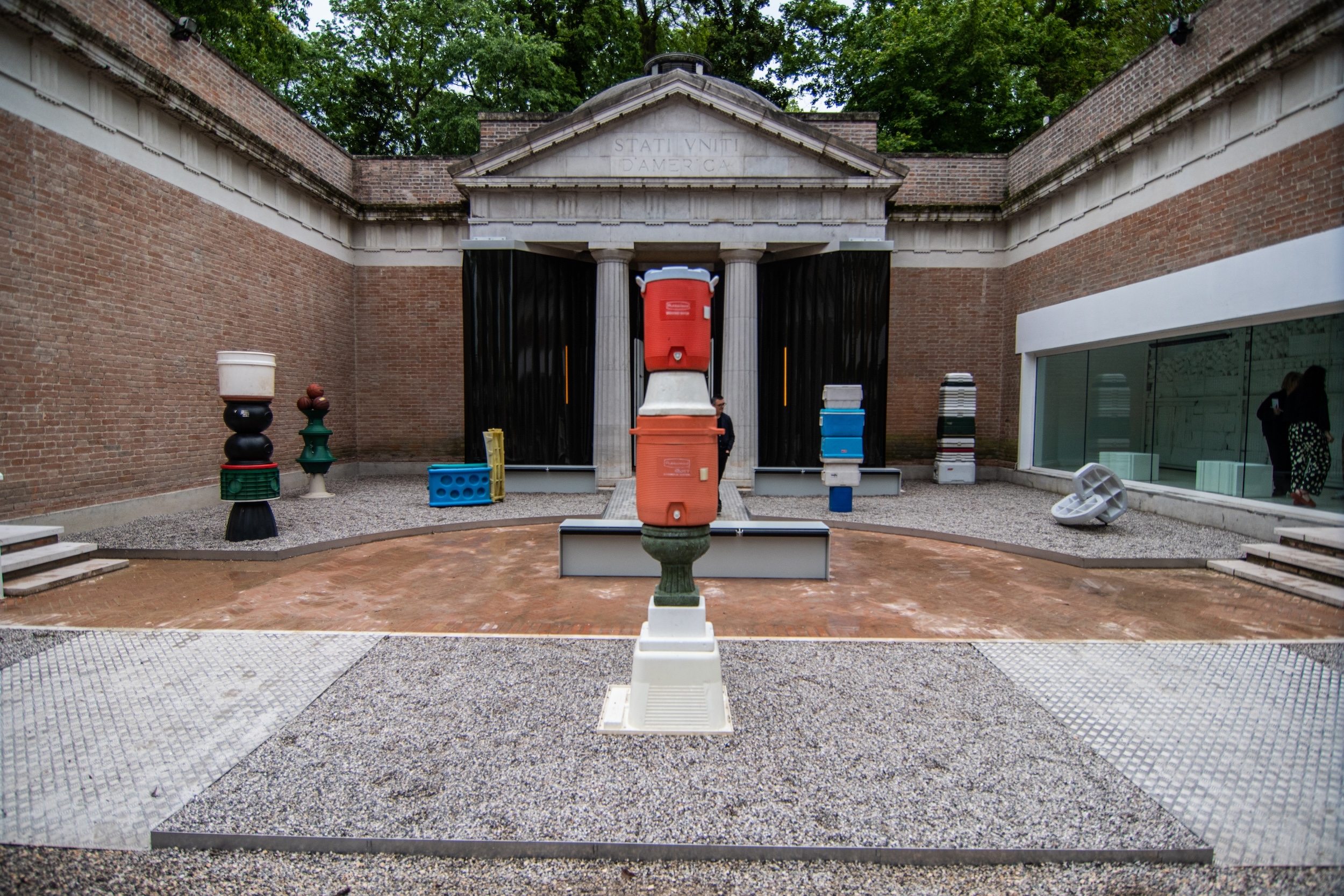
An exterior view of the 2023 U.S. pavilion titled 'Everlasting Plastics.'
Radical ideas, though, will be taking a backseat at Biennales for the foreseeable future.
While the US government will maintain its $375,000 grant for the 2026 Biennale Arte, participants must adhere to guidelines established by the Trump administration. According to the official grant opportunity posted earlier this month, the US pavilion must ‘promote American values’ and applicants must certify that they may ‘not operate any programs promoting Diversity, Equity, and Inclusion that violate any applicable anti-discrimination laws.’
‘[The administration] is getting rid of the whole critical aspect of the fine arts,’ says Atkinson, the 2018 curator. ‘I can't imagine how the US [architecture] pavilion would not fall under that purview and suddenly have an agenda which is quite different in terms of representing architecture and the United States.’
(Wallpaper* has reached out to the State Department for comment, but did not hear back by the time of publication).
For MacKeith and the organisers of this year’s pavilion, it’s important to keep the greater mission in mind. ‘It’s in the national interest, so to speak – it's to a greater good,’ he says. MacKeith is inspired by the individual supporters who made this year’s pavilion, PORCH, come to life. ‘Sometimes it’s $250, sometimes it’s $1,000, sometimes it’s many more times that, but it’s been truly rewarding to have these conversations.’
Anna Fixsen is a Brooklyn-based editor and journalist with 13 years of experience reporting on architecture, design, and the way we live. Before joining the Wallpaper* team as the U.S. Editor, she was the Deputy Digital Editor of ELLE DECOR, where she oversaw all aspects of the magazine’s digital footprint.
-
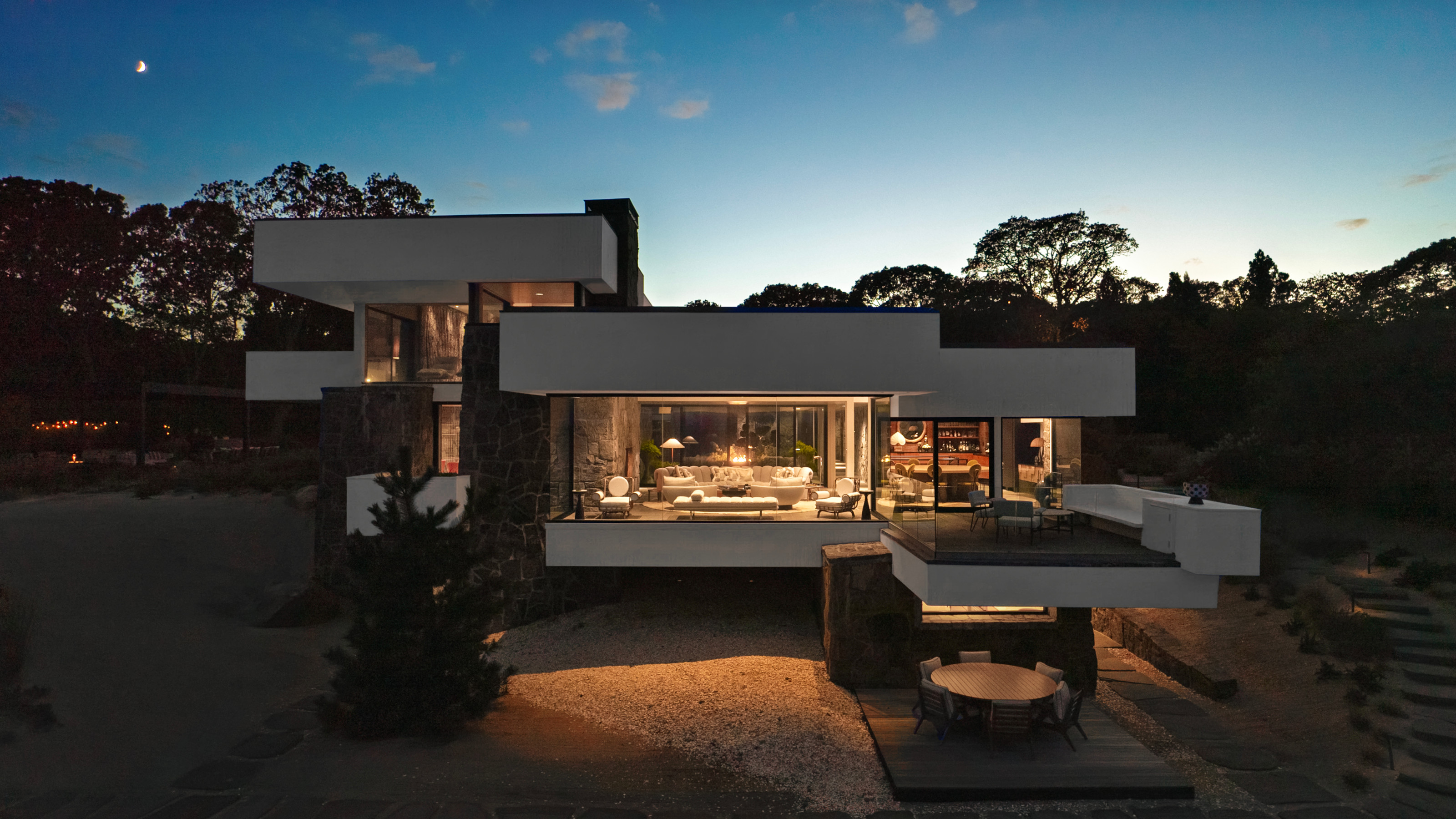 Modernism for sale: a Norman Jaffe-designed icon on Shelter Island hits the market
Modernism for sale: a Norman Jaffe-designed icon on Shelter Island hits the marketThe Osofsky House epitomised the glamour of high-end 70s modernism on Long Island. Now updated and refurbished, it’s back on the market for the first time in over two decades
-
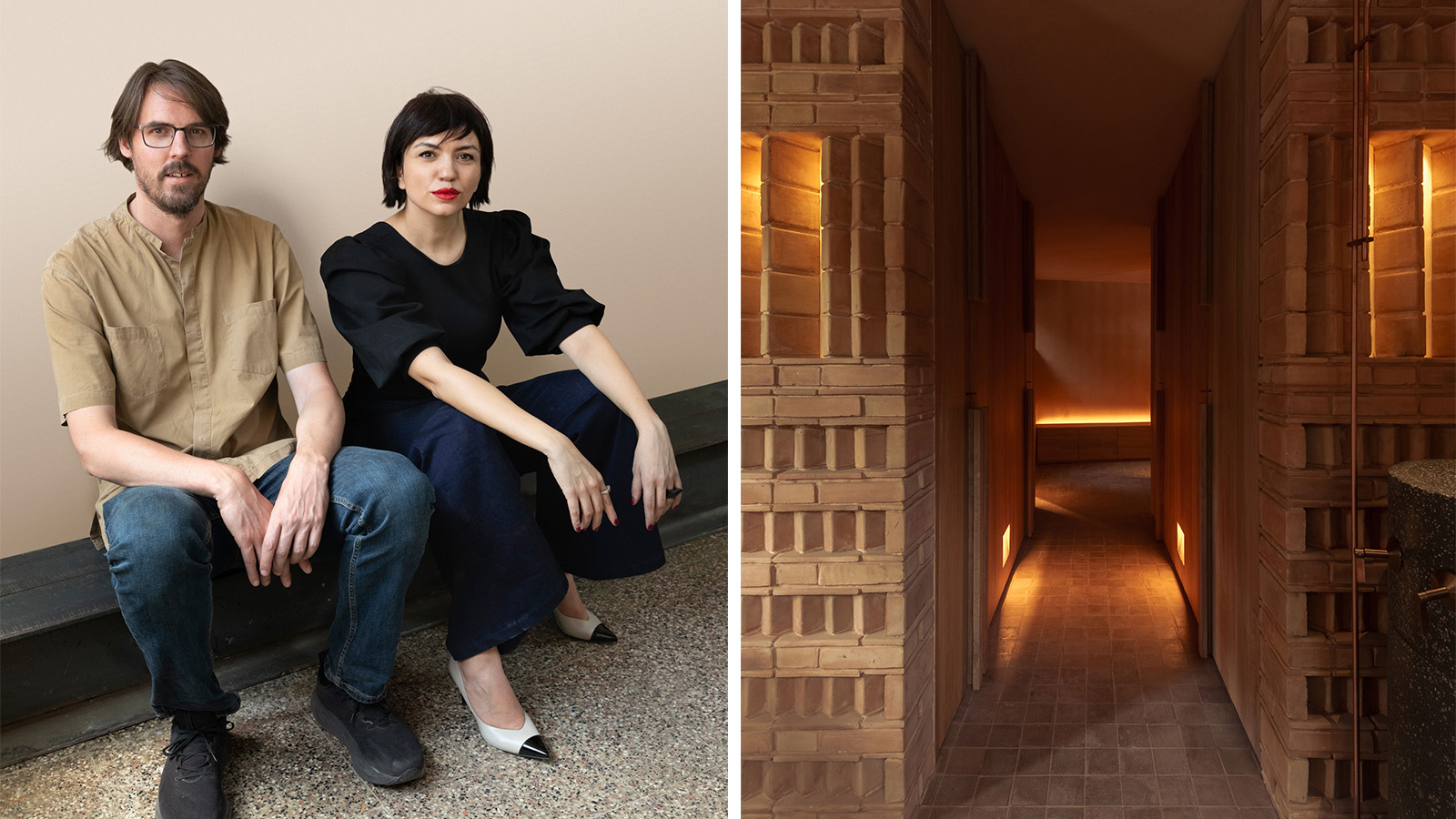 Discover Locus and its ‘eco-localism' - an alternative way of thinking about architecture
Discover Locus and its ‘eco-localism' - an alternative way of thinking about architectureLocus, an architecture firm in Mexico City, has a portfolio of projects which share an attitude rather than an obvious visual language
-
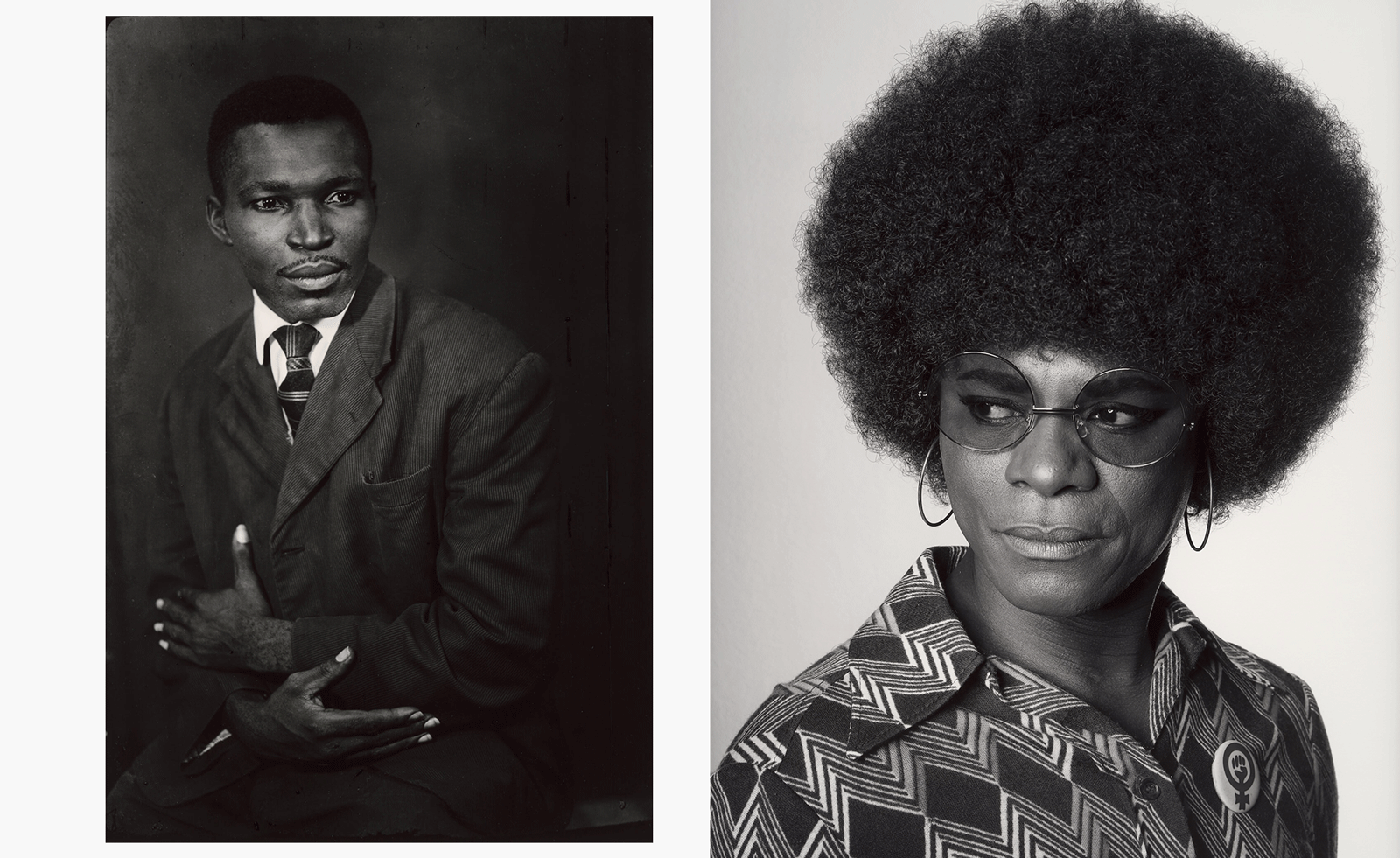 MoMA celebrates African portraiture in a far-reaching exhibition
MoMA celebrates African portraiture in a far-reaching exhibitionIn 'Ideas of Africa: Portraiture and Political Imagination' at MoMA, New York, studies African creativity in photography in front of and behind the camera
-
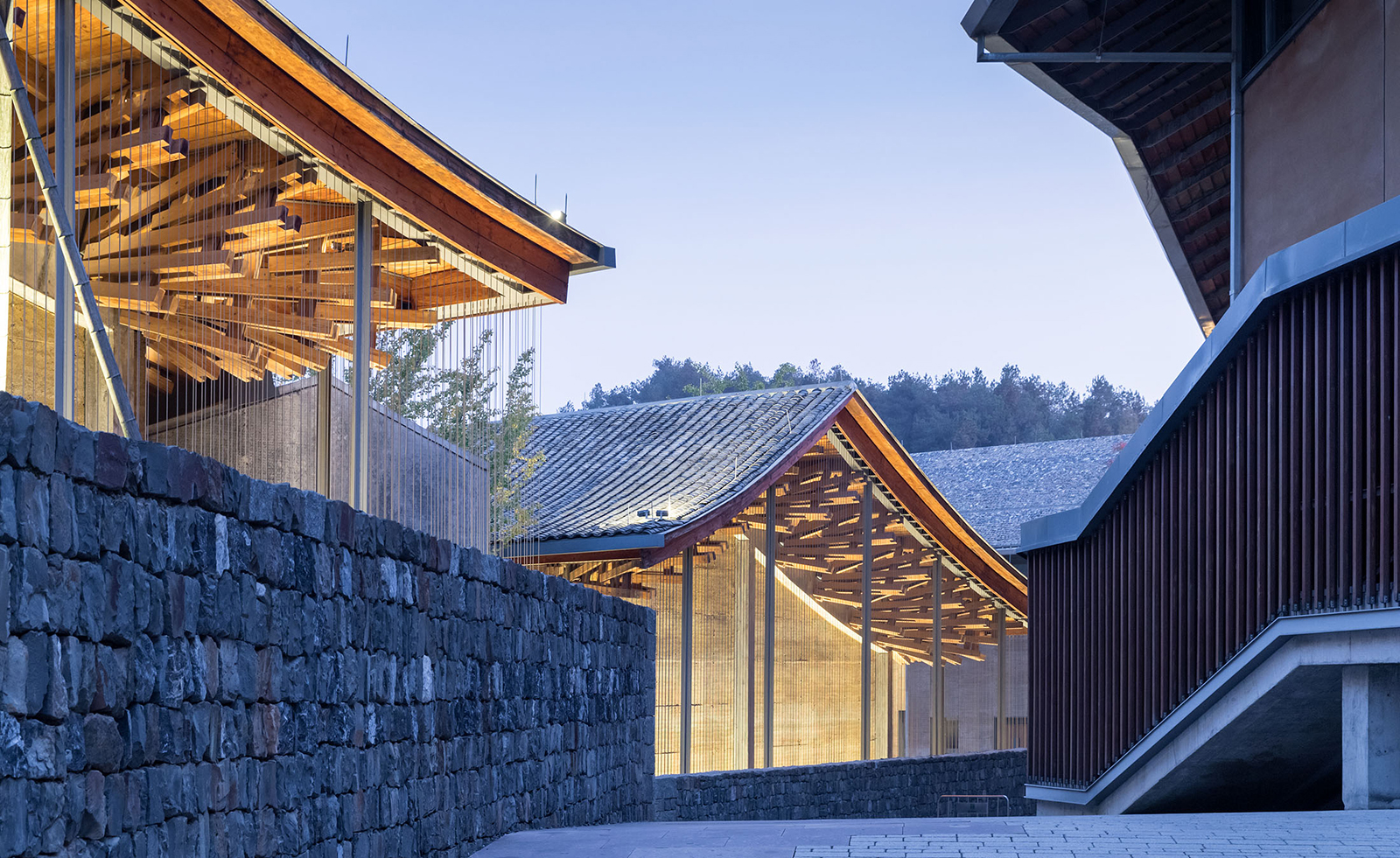 Wang Shu and Lu Wenyu to curate the 2027 Venice Architecture Biennale
Wang Shu and Lu Wenyu to curate the 2027 Venice Architecture BiennaleChinese architects Wang Shu and Lu Wenyu have been revealed as the curators of the 2027 Venice Architecture Biennale
-
 Carlo Ratti reflects on his bold Venice Architecture Biennale as it closes this weekend
Carlo Ratti reflects on his bold Venice Architecture Biennale as it closes this weekendThe Venice Architecture Biennale opens with excitement and fanfare every two years; as the 2025 edition draws to a close, we take stock with its curator Carlo Ratti and ask him, what next?
-
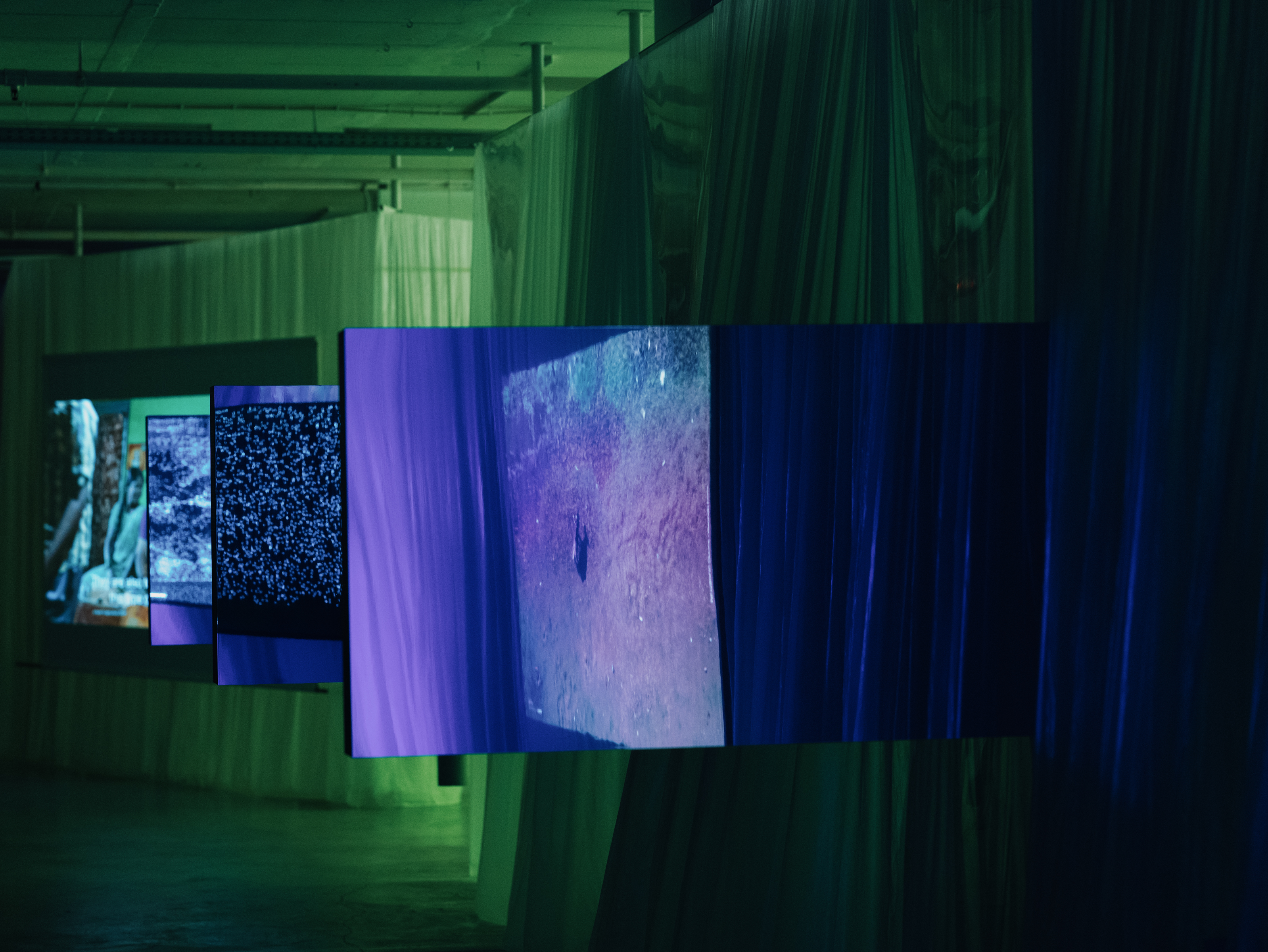 2025 Lisbon Architecture Triennale ponders the (literal and figurative) weight of humanity
2025 Lisbon Architecture Triennale ponders the (literal and figurative) weight of humanityJoin us on a tour of the 2025 Lisbon Architecture Triennale, exploring the question ‘How Heavy is the City?’ and our impact on the planet
-
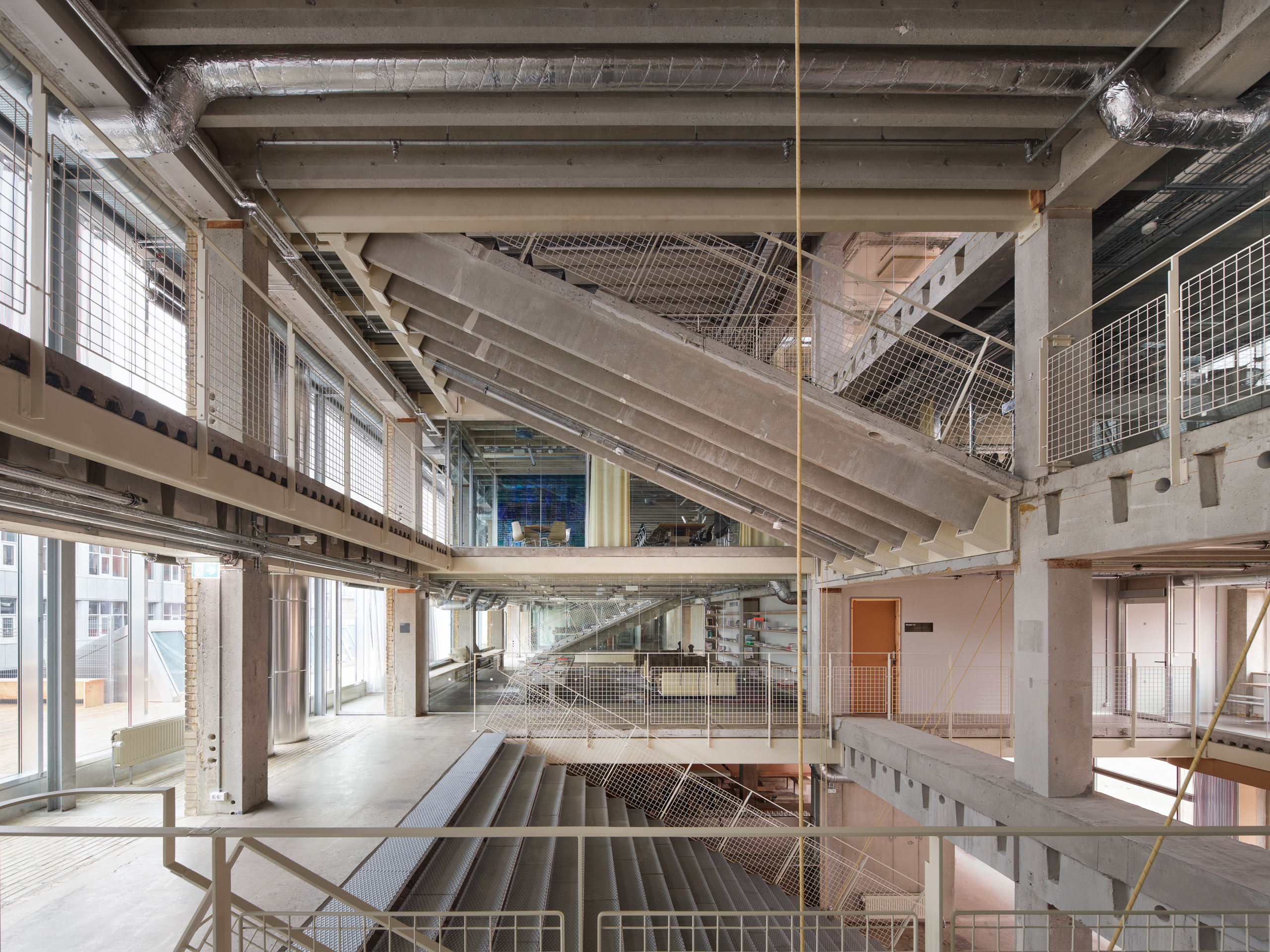 Is slowing down the answer to our ecological challenges? Copenhagen Architecture Biennial 2025 thinks so
Is slowing down the answer to our ecological challenges? Copenhagen Architecture Biennial 2025 thinks soCopenhagen’s inaugural Architecture Biennial, themed 'Slow Down', is open to visitors, discussing the world's ‘Great Acceleration’
-
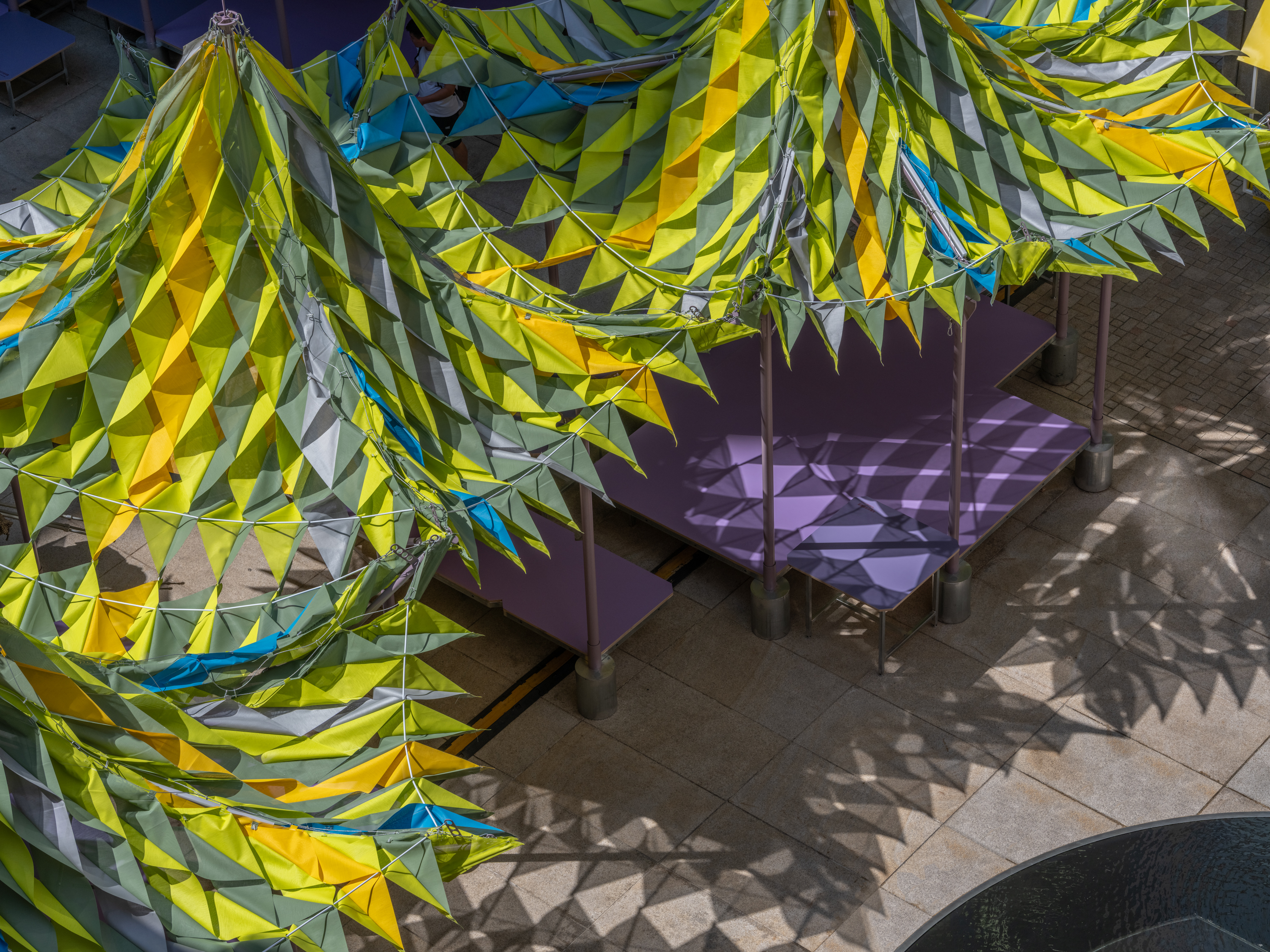 Shanghai’s biennial, RAMa 2025, takes architectural exploration outside
Shanghai’s biennial, RAMa 2025, takes architectural exploration outsideRAMa 2025, the architecture biennial at Rockbund Art Museum in Shanghai, launches, taking visitors on a journey through a historic city neighbourhood – and what it needs
-
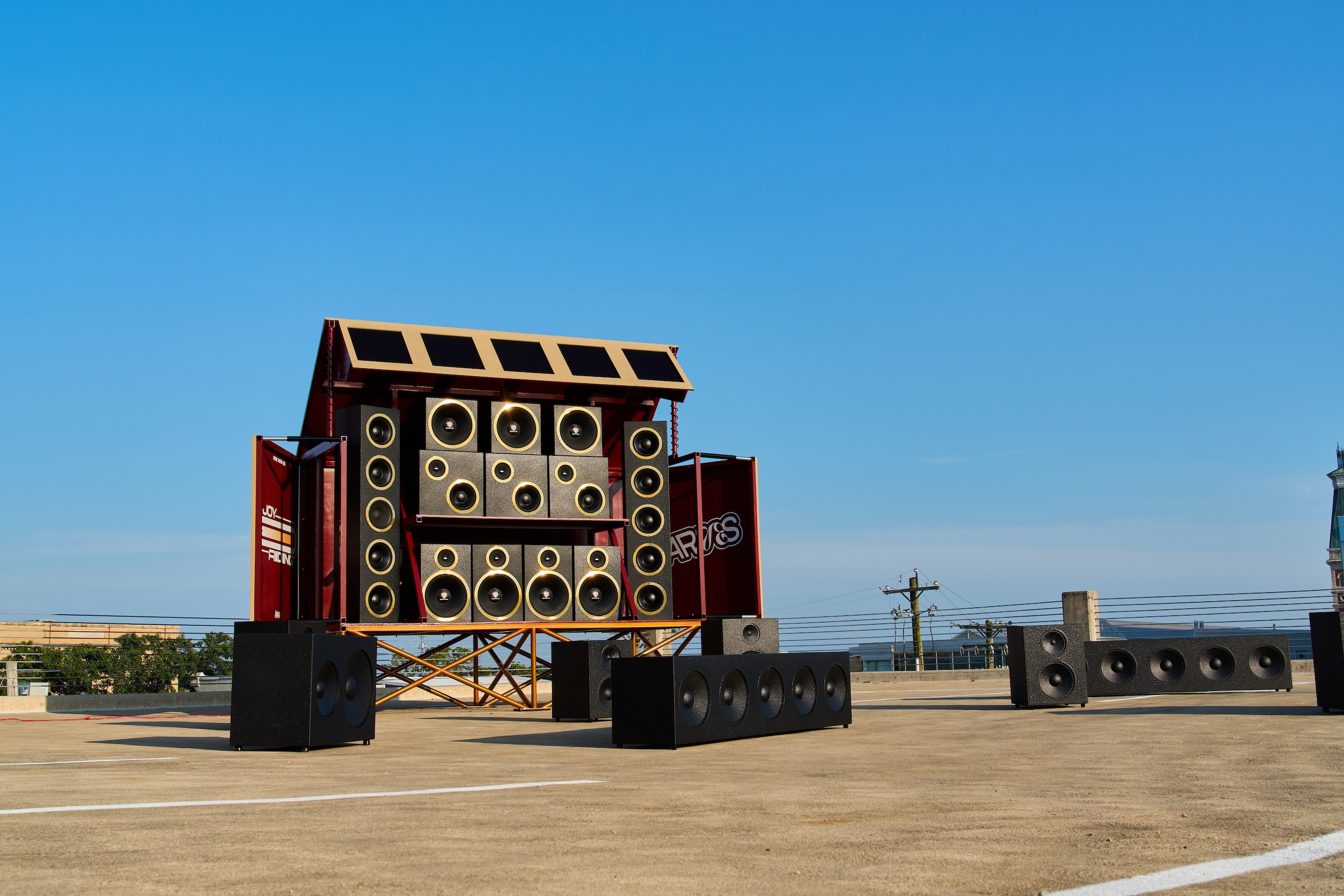 Germane Barnes just transformed a humble Indiana parking garage into an enormous sub-woofer system
Germane Barnes just transformed a humble Indiana parking garage into an enormous sub-woofer systemWith Joy Riding, the Miami-based designer’s installation at Exhibit Columbus, Barnes celebrates togetherness by evoking Black car culture
-
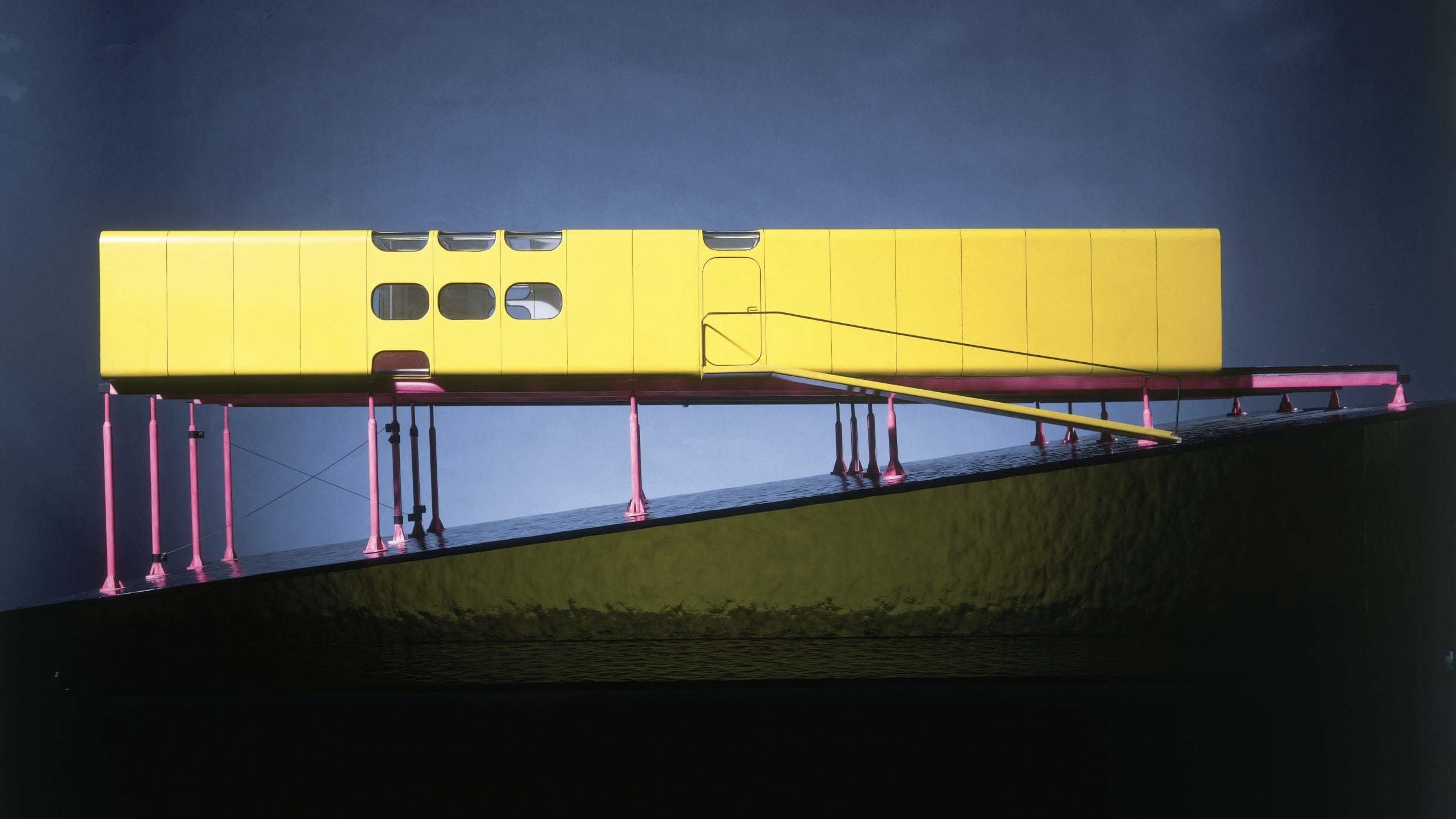 A new London exhibition explores the legacy of Centre Pompidou architect Richard Rogers
A new London exhibition explores the legacy of Centre Pompidou architect Richard Rogers‘Richard Rogers: Talking Buildings’ – opening tomorrow at Sir John Soane’s Museum – examines Rogers’ high-tech icons, which proposed a democratic future for architecture
-
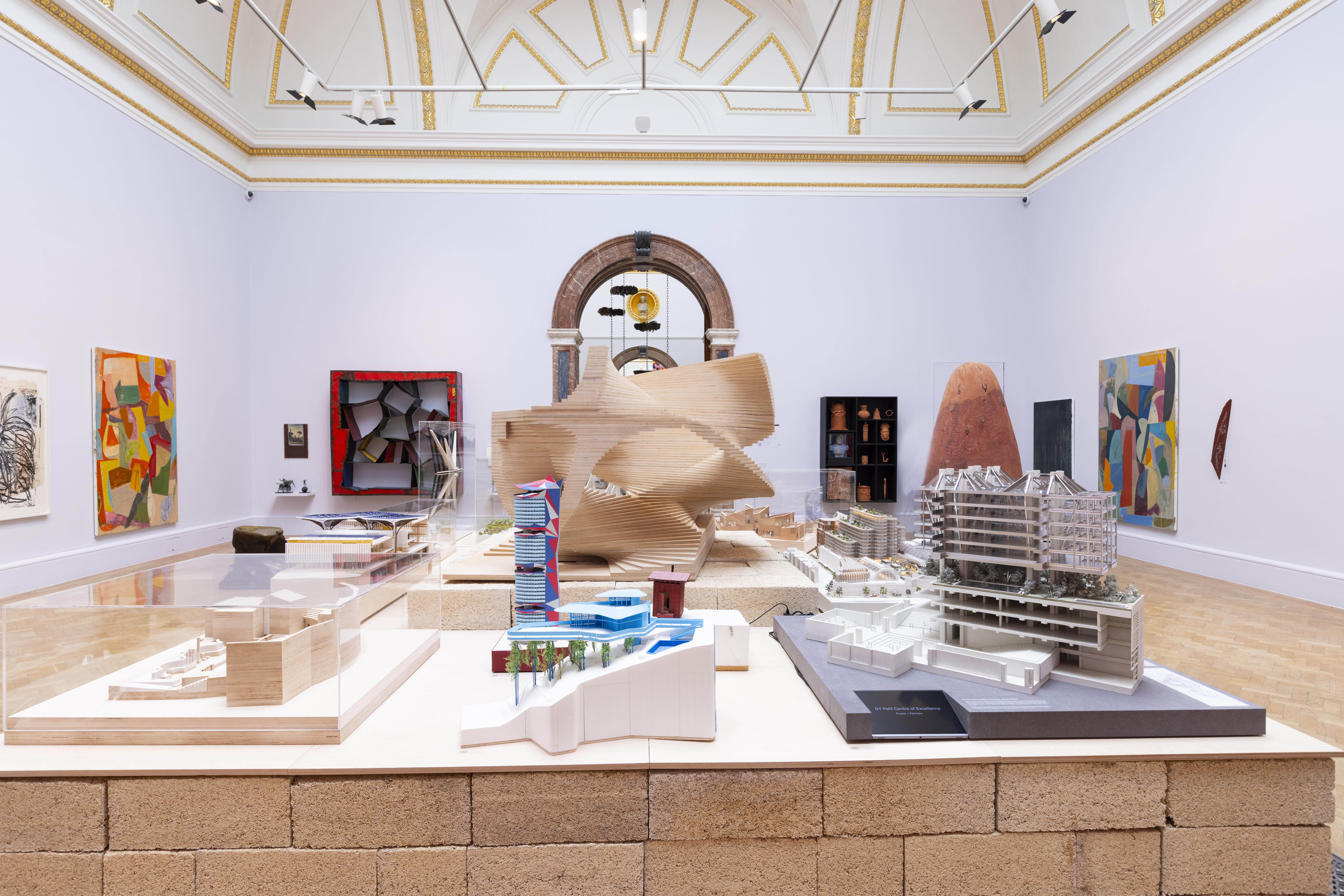 At the Royal Academy summer show, architecture and art combine as never before
At the Royal Academy summer show, architecture and art combine as never beforeThe Royal Academy summer show is about to open in London; we toured the iconic annual exhibition and spoke to its curator for architecture, Farshid Moussavi